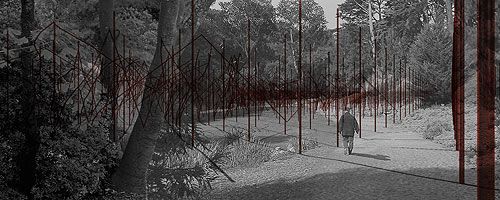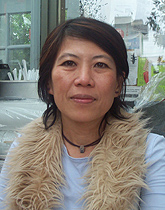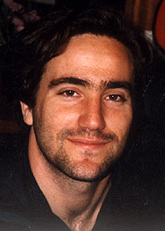Berkeleyan
 Bright-red resinous strands bent in varied shapes and forms are a central feature of "Beyond Quantities," a National AIDS Memorial proposal by a CED design team. |
'Beyond Quantities'![]()
| 31 March 2005
Associate Professor of Architecture Raveevarn Choksombatchai knows about
winning and nearly winning memorial-design competitions. She and her former
collaborator planned and saw built the first-place design for the Women’s
Suffrage Memorial in St. Paul, Minn.; they also placed third in a design
contest for that city’s remembrance of Vietnam veterans.
 Raveevarn Choksombatchai (Cathy Cockrell photo) |
In practical terms, the team eschewed overt symbols and specific associations like the 168 empty chairs in the Oklahoma City National Memorial. Their provocative design involves bright-red resinous strands, a canopy of hummingbirds, and the sound of human voices counting from zero to 20 million and beyond — “to make conscious the idea of quantity,” as Choksombatchai puts it. “You have to count for over two years to get to 20 million,” which is the number of people estimated to have died so far of AIDS.
 Andy Shanken |
By “public” the team was thinking globally — hence their inclusion of plans for a webcam, which would collect audio and video from the memorial site for transmission worldwide over the Internet and allow the speakers of many tongues to send sound into the memorial’s counting system.
The proposal suggests “the complexity and the magnitude of devastation” caused by AIDS, says Choksombatchai, and “the magnitude of public discourse” that the team would hope to instigate. As she learned from response to her Women’s Suffrage Memorial, “One cannot underestimate the public voice, when you open a discourse and the public begins to insert its own interpretation. I’ve found that most fulfilling.”

